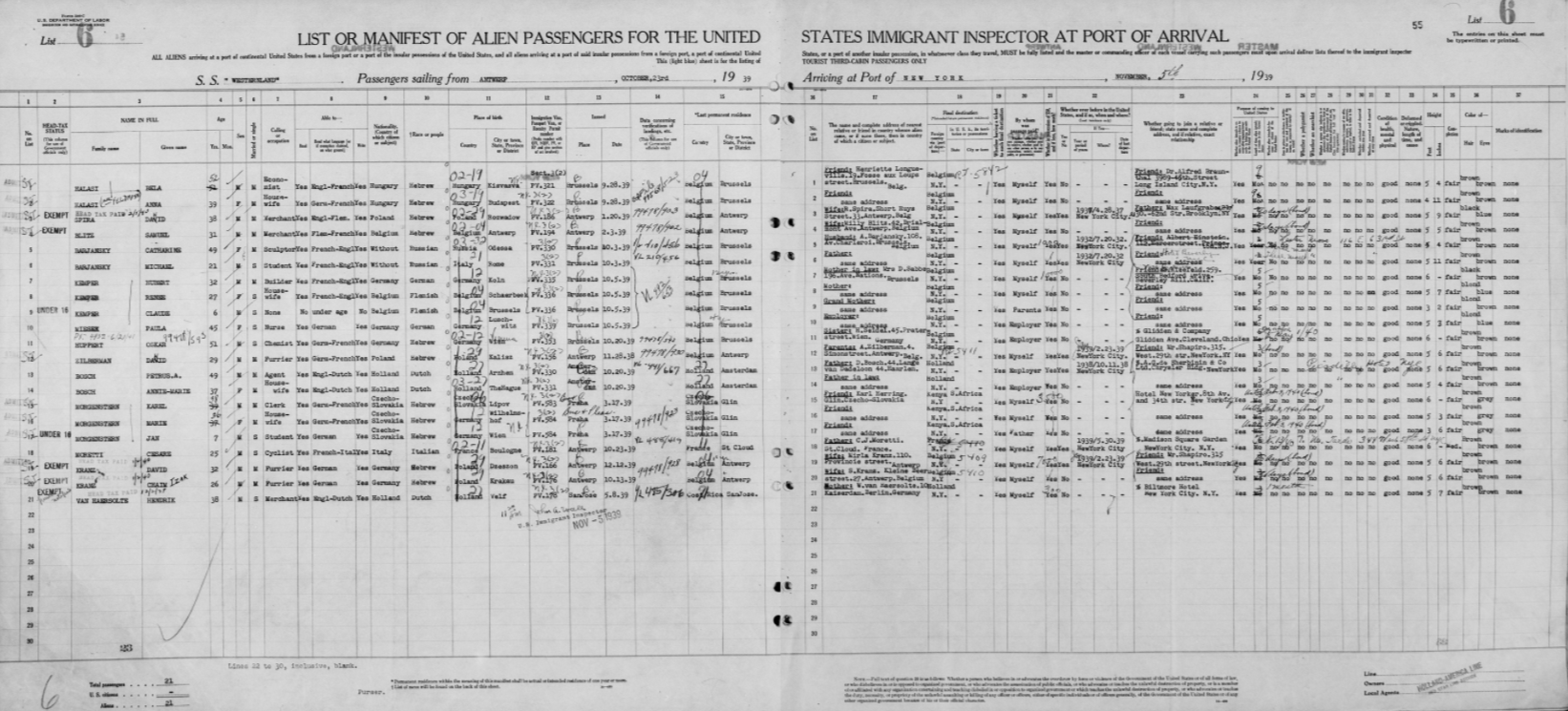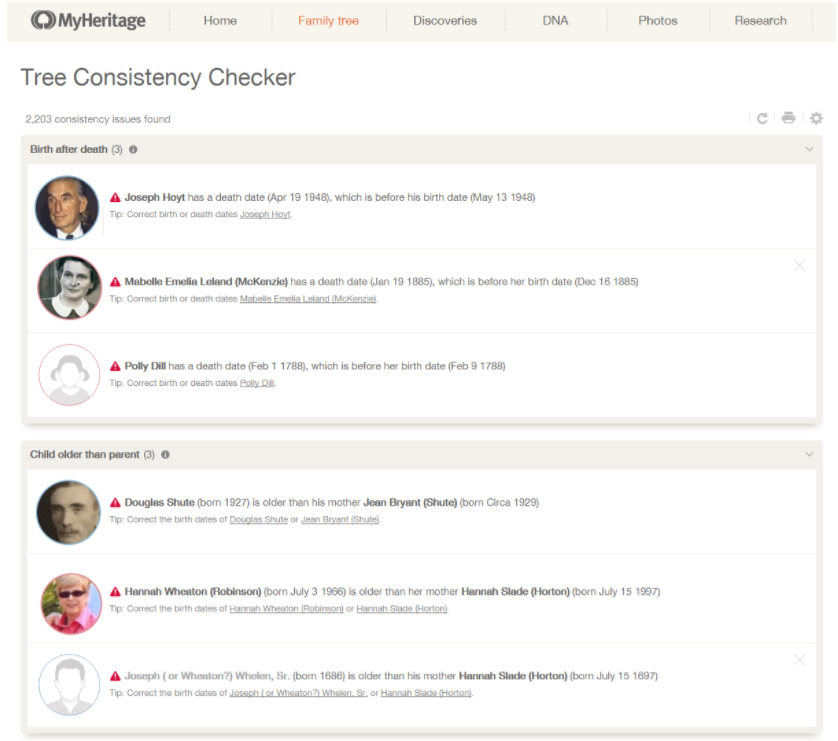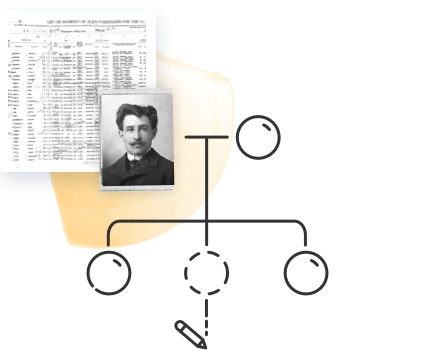
To say that the availability of online records has revolutionized genealogy would be an understatement. It wasn’t that long ago that it could take months or even years to pull together the kind of information you can now find over a leisurely afternoon spent browsing online, sipping coffee at your desk. Census records, birth certificates, photographs, naturalization records — so much is available, sometimes literally at the tap of a key.
For new genealogists, going online for the first time can be like visiting a sumptuous buffet table, brimming with tantalizing delicacies. When there wasn’t that much information readily available — when you had to actually go to an archive or library to find things — there were fewer opportunities to fill your tree with bad information. These days, there is so much available that it’s extremely tempting to vacuum up every record and Smart Match™ offered online and attach it to your tree. Poof! You’ve taken your tree all the way back to Adam and Eve!
If only it were that easy.
A big tree with thousands of people may seem impressive on the surface, but when the tree is filled with unreliable information, and with people who are not actually related to you, it really doesn’t matter how big it is.
So how can you fill your tree with good information?
Professional genealogists have clear standards for how they conduct research. The professional bible known as Genealogy Standards, published by the Board for Certification of Genealogists, lays out a five-point protocol known as the Genealogical Proof Standard. And, while it might be unrealistic to hold every casual user working on an online family tree to that professional standard, especially when they’re just getting started, it’s worth looking at what the Genealogical Proof Standard entails and how beginners can learn from it.
-
Conduct a reasonably exhaustive search:
This means you must exhaust — within reason — all possibilities to find the information you’re looking for, which also means familiarizing yourself with what records are available and where to find them. For beginners, it’s important to understand that while MyHeritage has over 9.8 billion records, and you are almost certain to find some of what you’re looking for, not every document you need will be online.
People often mistakenly assume that everything they need is going to pop up when they hit “search all records,” which leads them to make mistakes: If a search returns a record that seems like it could be the one they want, they assume it must be because they’re not aware that the correct one is simply not indexed or available online.
If you’re searching for a birth certificate for your great-grandfather John Williams, who you think may have been born in New York City in 1907, you can’t simply accept that the first birth certificate you see with that name and year is the correct one. Because there might have been three — or 13! or 30! — John Williamses born in New York City that year. What specific information matches previously confirmed information about your John Williams and suggests that a specific record should be added to your tree? Parents’ names? Parents’ place of birth? Address? Birthdate?
-
Use complete and accurate source citations:

Simply put, you should indicate where your information came from, and use credible sources. Anyone looking at your tree should be able to replicate your search and find the same information from the same source that you did.
For beginners, it’s crucial to remember that other users’ trees do not necessarily count as credible sources. Newbies tend to get a little over-eager about confirming Smart Matches™ to other people’s trees. Perhaps that person has already done the heavy lifting of sketching out some distant branches of your family. By confirming a match, all those new people will be automatically grafted into your tree, which can be gratifying. But doing so sometimes means you are unwittingly importing and embedding many errors in the process.
Remember that trees are only as good as their creators. Some are worth copying and some are definitely not. Evaluate how good the information is in the other user’s tree. Is it well-sourced? Is it logical? Does the creator have a legitimate connection to the family in question? Take note before grafting it onto your own.
-
Perform a thorough analysis and prove correlation:
Here’s where you look at the information you’ve found and interpret it. How good are the sources you have? How reliable is the information they contain? How was that information obtained and from whom? What next steps for research or conclusions has it led you to?
If you’re using information from a death certificate, for instance, think about who completed it. A spouse may be a more reliable source for the name of her late partner’s parents — whom she may have actually known — than a child born after they died. A death certificate completed by an undertaker is less reliable than one filled out by a family member. And the information on a death certificate often filled out under duress by grief-stricken family members, is generally less likely to be reliable than the information on a birth certificate.
-
Resolve conflicting information:
A tough one, but we all encounter information that doesn’t jive: In one census, your great-great-grandfather was said to have been born in Switzerland in 1835; in the next, he says he was born in New York City in 1838. You have to think through the steps you’ve taken to decide which one is more correct than the other — maybe it’s a preponderance of evidence suggesting he was Swiss, including, for example, a naturalization document showing an address you have confirmed was his. You can’t make a credible conclusion if you haven’t resolved these conflicts.
-
Include a soundly reasoned and coherently written conclusion:
What’s the upshot of all you’ve found? How did you get from all the pieces of evidence to the conclusions you have made? Professional genealogists tie it all together. Taking the step of documenting your reasoning eliminates the chance that you’re simply rubber-stamping a preconceived notion, or that you haven’t fully considered all of the evidence.
Does the GPS seem daunting? Are your eyes glazing over? That’s OK.
Even if you’re not a professional genealogist and have no plans to become one, one simple thing you can do while working on your tree is to use what might be called the Common Sense Standard: When analyzing records, be especially skeptical about adding seemingly implausible information to your tree. Families, for the most part, typically follow common sense arcs. So should your tree. Sure, sometimes families have extraordinary circumstances, but that’s the exception, not the rule.
There’s a principle used in science called Occam’s Razor that says the most likely explanation for something is the simplest and least complicated. I like to practice something I call “Occam’s Razor Genealogy:” When evaluating genealogical options, you need to remember that often the least convoluted answer is the correct one. That means you should pay attention to basic chronology and geography, which really shouldn’t be difficult.
I can’t believe I have to say this, but having looked at many trees over the years, here goes: Children can’t be born before their parents. And you can’t emigrate to a new country before you’re born or serve in the military after you die. I know, I know, it’s crazy, right? But before you add Mary Farnsworth (born 1788) and Josiah William Elliott (born 1785) as the parents of Josiah William Elliott Jr. (born 1777), stop and take a moment. It’s just not possible.
Similarly, remember the limitations of human biology. A man can’t father a child when he’s 10 years old. A mother can’t be 90 when she gives birth, Bible stories notwithstanding. Full siblings can’t be four months apart. Sure, people move around, but they don’t typically have children born on three different continents in three years. If Jacob and Ida Rosenstein had children born in Zhytomyr, Ukraine in 1891, 1893, 1897, and 1899, you should be skeptical of the idea that their son Hyman was born in 1896 in Argentina, and you definitely should not include that fact in your tree unless you have ironclad evidence. And, if a preponderance of evidence suggests someone’s year of birth is 1910 or 1911, it’s highly unlikely that a death certificate for someone born in 1927 is the same person, so think long and hard before you attach it to your tree. Sounds silly, right? But you’d be amazed how many times I have seen trees with exactly these kinds of glaring errors.
The great news for beginners is that MyHeritage has a built-in feature called the Consistency Checker that can eliminate many common-sense errors almost effortlessly. Access the Consistency Checker from the drop-down menu under “Family Tree” on the MyHeritage home page. It will automatically flag exactly these kinds of errors — wives who are 70 years younger than their husbands, people living to 130, or parents born after children — and can sometimes fix them with as little as one click.

So, the next time you sit down to work on your tree, try to change your mindset. Instead of being an information vacuum, sucking up every record in your path with abandon, think of yourself as an information gatekeeper: Be skeptical, and don’t let any information through that gate and into your tree until you’ve done your best to confirm that it deserves to be let in.


